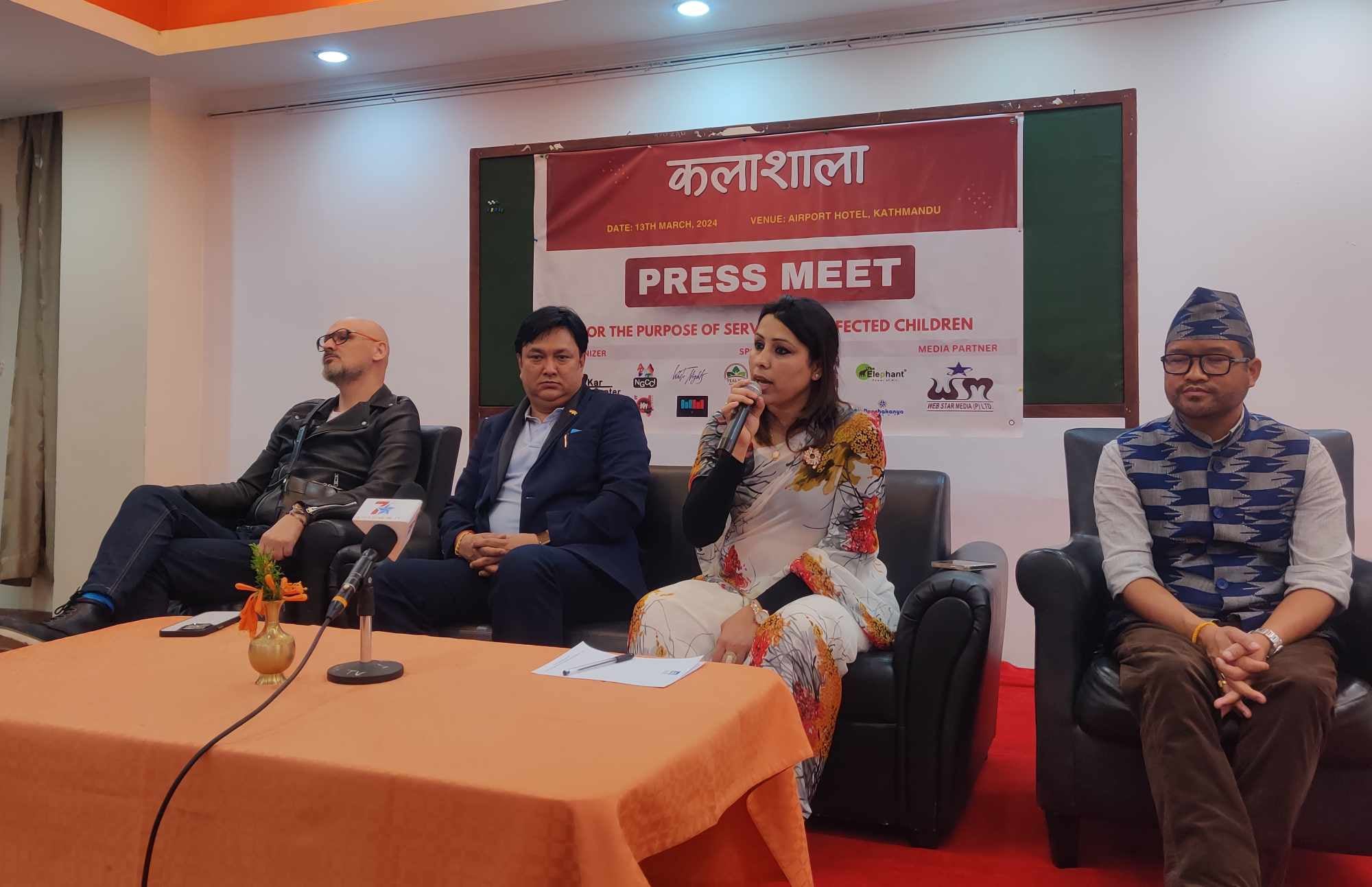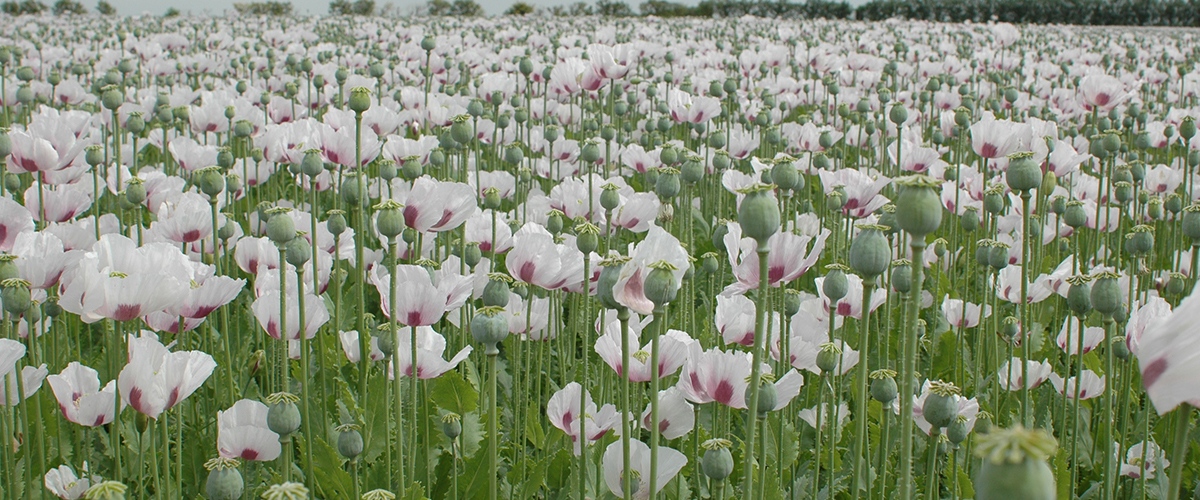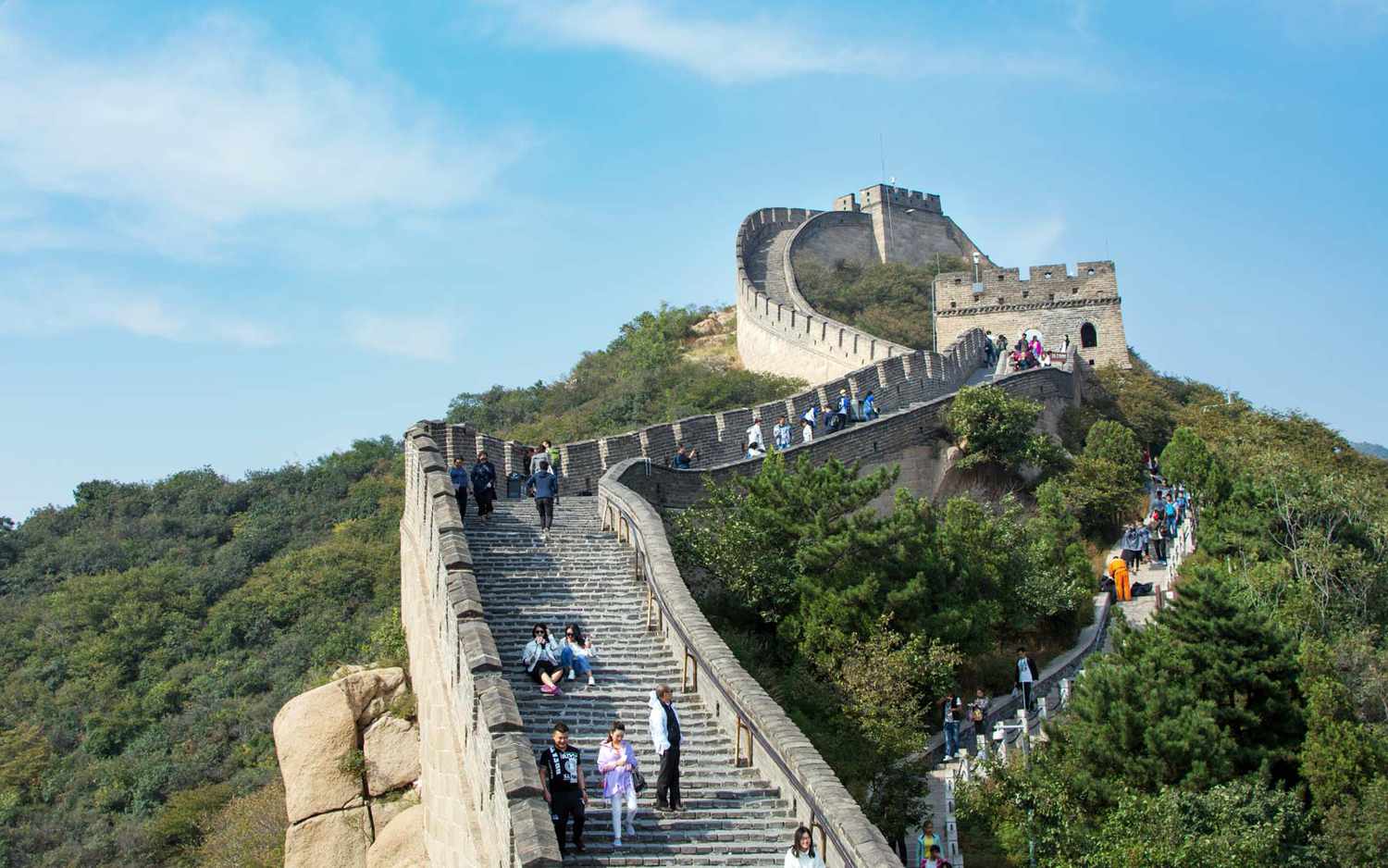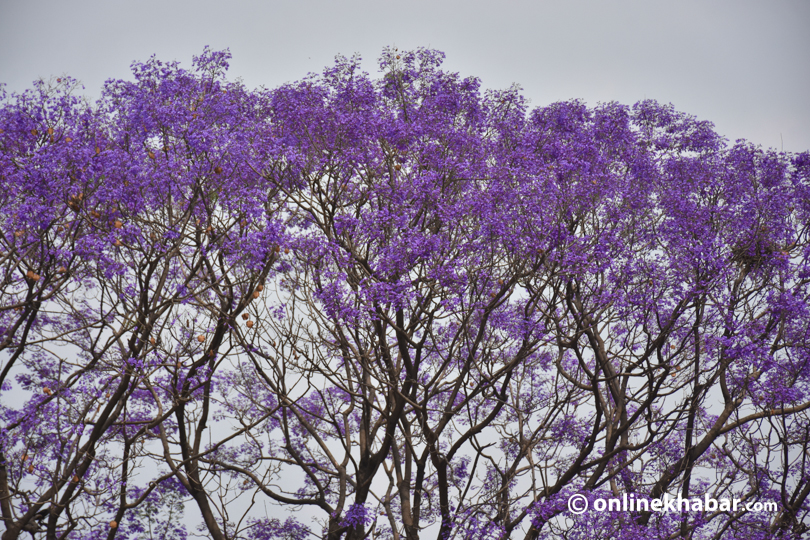 As the spring season reaches its peak in Kathmandu, major roads in the city turn purple. Beautiful flowers from big plants blanket tarred roads and busy sidewalks—just to get crushed by speeding tyres and hastening feet after a while. But, if you catch the scene before the blooms are trodden by the vehicles and people, you will feel blissful for a moment.
As the spring season reaches its peak in Kathmandu, major roads in the city turn purple. Beautiful flowers from big plants blanket tarred roads and busy sidewalks—just to get crushed by speeding tyres and hastening feet after a while. But, if you catch the scene before the blooms are trodden by the vehicles and people, you will feel blissful for a moment.
Perhaps there are few hundred people in Kathmandu who have not seen jacaranda flowers. Maybe, the number of people who recognise it as jacaranda is even lower. Apparently, numerous posts on social media around this time every year suggest that thousands of Kathmanduites mistake this foreign plant for their native ‘shirish’ (mimosa).
Jacaranda undoubtedly is not native to Nepal. So where did it come from? How and why is it so popular in Kathmandu that locals mistake it for some other plants? Why are people confused about shirish and jacaranda, and why native shirishes are less common here than alien jacaranda? These interesting questions do not have easy answers.
In an attempt to find answers to these curiosities, it seems jacaranda is an exotic lover of Kathmandu, which has contributed to the city’s beauty, but still posed threats to.
The long journey to Kathmandu

Owing to characteristics of the plant, botanists agree that jacaranda (Jacaranda mimosifolia) is native to South America (Brazil, Mexico and Argentina). The plant is common in many Asian, African and European countries these days.
Nepali botanists and historians suggest that Rana aristocrats brought this plant to Kathmandu in the late 19th and early 20th century. There are, however, different claims about who actually bought it and why they were attracted to this foreign flower while their own country was full of exotic flora.
Historian Saurabh, who also has a wide range of knowledge about plants of Nepal, says that Sur Shamsher Rana, a member of former Prime Minister Bir Shamsher’s family, brought the plant to Nepal in the 1920s from Darjeeling or any hilly area of India. He planted the flower in his private garden, near the place where Hotel Yak and Yeti was established later, in Darbarmarg, and this was the first jacaranda plant in Nepal. The author in his controversial book Asahamati further writes that it was King Tribhuvan who gave life to the second jacaranda plant in Kathmandu. He planted the flower in front of the southern gate of the Narayanhiti Palace, across Jai Nepal cinema hall today.
On the other hand, Tirtha Bahadur Shrestha, whom contemporary Nepali botanists refer to as the leader of the first generation plant scientists of the country, believes that it has already been around 150 years since the plant was first brought to Nepal. However, he also agrees that members of the Rana family were behind the import. “It is difficult to figure out the exact date of the import,” he says, suggesting it must be in mid or late 19th century. He shares, “The plant first came to Ranas’ gardens and few plants came to the streets later. Jacaranda became common in Kathmandu when the government itself planted the flowers around Tundikhel ground in the 70s.”
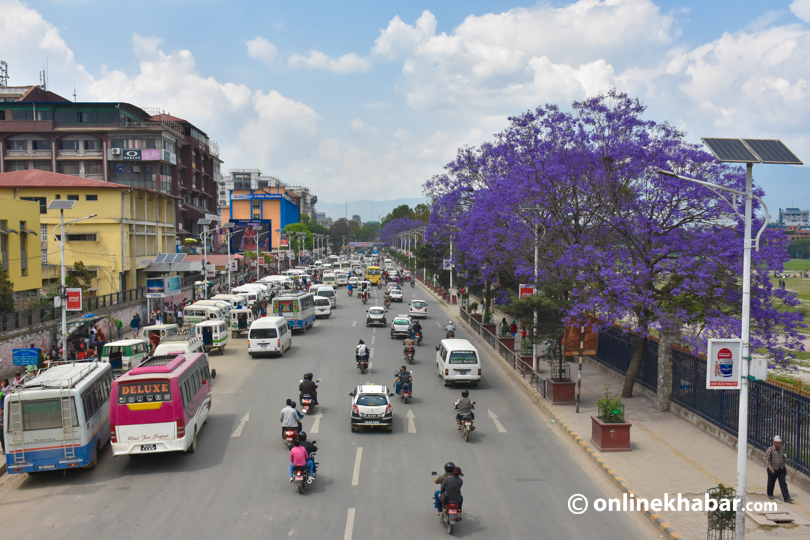
Many people, including Saurabh, believe that the flowers were planted across the city in 1961 when Queen Elizabeth II visited Nepal. Shrestha does not agree with the claim saying there were only few jacaranda flowers in Kathmandu then.
But Saurabh believes the road around Tundikhel itself was constructed before the Queen’s trip and jacaranda, among other plants, was planted at the same time.
Confusion with shirish
The history of confusion between jacaranda and shirish is as old as the growth of jacaranda in the city.
Of course, there are similarities between the plants as they both are members of mimosa or albizia family. Shrestha says compound leaves of the two plants look alike; hence botanists have registered them in the same family.
In the albizia family, shirish (loosely translated as mimosa in English) is the chief type. The shirish itself has dozens of variants and eight of them are available in Nepal, Shrestha informs, adding they do not have separate names in Nepali, but are known for their colours (kalo shirish, rato shirish, seto shirish).
The botanist, however, sees no point in comparing shirish and jacaranda. Jacaranda, at least the one that is in Kathmandu, has a peculiar purple colour whereas shirish of such colour has been never been found in Nepal.
Shrestha ‘blames’ noted novelist Parijat for creating the confusion. Parijat, in her masterpiece Shirishko Phool, identifies jacaranda for shirish, according to him. “Parijat spent her childhood in Darjeeling where there were many shirish plants. Then she came to Kathmandu and thought jacaranda was also a kind of shirish as they had similar leaves,” Shrestha claims, “She then asked essayist Shankar Lamichhane to write an introduction to her novel. Lamichhane did not know what a shirish flower looked like. He asked officials of the then Department of Plant Resources and they told him that the shirish was synonym for jacaranda.”

Saurabh in his article, however, refutes Shrestha’s claim about ignorance and innocence of Parijat and Lamichhane. He does not categorically explain how the confusion surfaced.
Shrestha explains that difficulty in cultivating native shirish is also a one of the major reasons for the confusion. Whereas jacaranda can grow on its own without human care and attention, shirish is a garden plant that demands a lot of effort to cultivate. “That is why it is easier for people to perceive jacaranda as shirish rather than sweating over the shirish itself.”
“Our psychological tendency of ignoring things which are already available around us and valuing new thinks is also a part of the confusion,” he adds, “Otherwise, there are many benefits of shirish. They contribute to nitrogen fixing in the soil and make it more fertile. It also has medicinal values.”
What’s in a name?
The confusion between shirish and jacaranda has forced both the plants to lose their identity. Whereas only a few Kathmanduites recognise shirish, which is native to their own land and which has a revered position in some of greatest Sanskrit epics by Mahakavi Kalidas, failing to recognise jacaranda itself is also a problem from the botanical perspective.
Gardeners working for Ranas did not know which flower it was; therefore they gave their own name to jacaranda, according to Shrestha. “Most of the gardeners were Newars of Kathmandu and they called it ‘chakhunba swan’, which literally translates to ‘sparrow flower’, because a fallen jacaranda flower looks like a sparrow in its shape when you pick it up from the ground and put it on your palm.”
Botanists believe that it is wrong to translate names of plants and species into new languages because their names carry detailed information about their origins and development of the plant and their characteristics.
“‘What’s in a name’ is a different philosophy with its own value, but in botany, names hold importance and any plant has to be named correctly,” Shrestha says, suggesting translating shirish as mimosa and jacaranda as ‘nilo (blue) shirish’ or ‘chakhuncha swan’ is wrong for they pose threats to their identity as well as the botanical knowledge so far achieved about the plants.
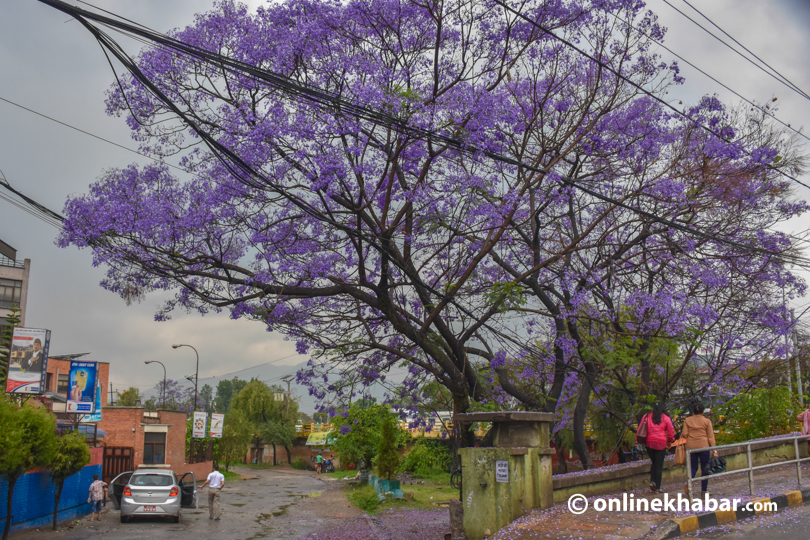
“If jacaranda was not named jacaranda, you could not trace it to South America and see how it moved to other places of the world.”
Easy spread and need of management
In the past four decades, the spread of jacaranda has been steady in Kathmandu. Whereas its contribution to the aesthetics of the city is appreciable, environmental scientists fear that uncontrolled growth of such plants may pose threats to native plants and other aspects of the environment.
“Jacaranda grows fast; it takes only a few years to grow up. On the other hand, it can grow in any kind of soil,” Yadav Upreti, environment scientist at International Union for Conservation of Nature (IUCN) Nepal office, informs, “Therefore, the plant will spread more in the Kathmandu Valley if we do not do anything.” His tone suggests that some initiatives have to be taken to control the spread.
Shrestha adds that a changing Kathmandu also has a role in its speedy growth. “Around four decades ago, there were fewer people in Kathmandu, and you could see mists and dewdrops in the morning. Now, with the growth in the number of people and vehicles, the temperature in the city has significantly gone up; subsequently, you rarely find dewdrops on the ground,” he explains, “Kathmandu in its original state was not an appropriate place for South American plants like jacaranda. However, recent changes are making it a favourable one.”
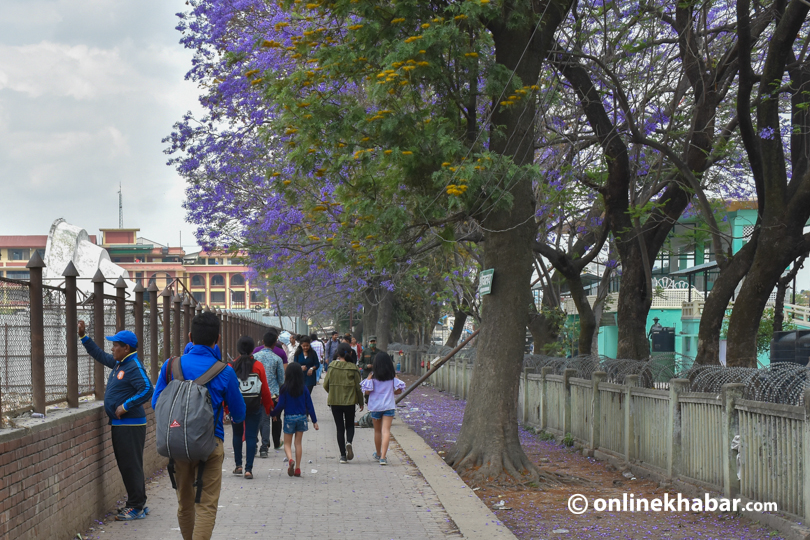
That is why there are some jacaranda plants in dense forests of the Valley like the one at Swayambhunath these days, according to Shrestha. Though it looks quite beautiful to see purple flowers blossoming in green forests, they might result in the extinction of local plants, he warns.
Therefore, Shrestha suggests concerned authorities launch a study about invasive nature of jacaranda and its impact on local plants—because no such research has been conducted in Nepal ever. Its growth can be ‘managed’, not ‘controlled’, while still embracing the beauty it adds to the city.











